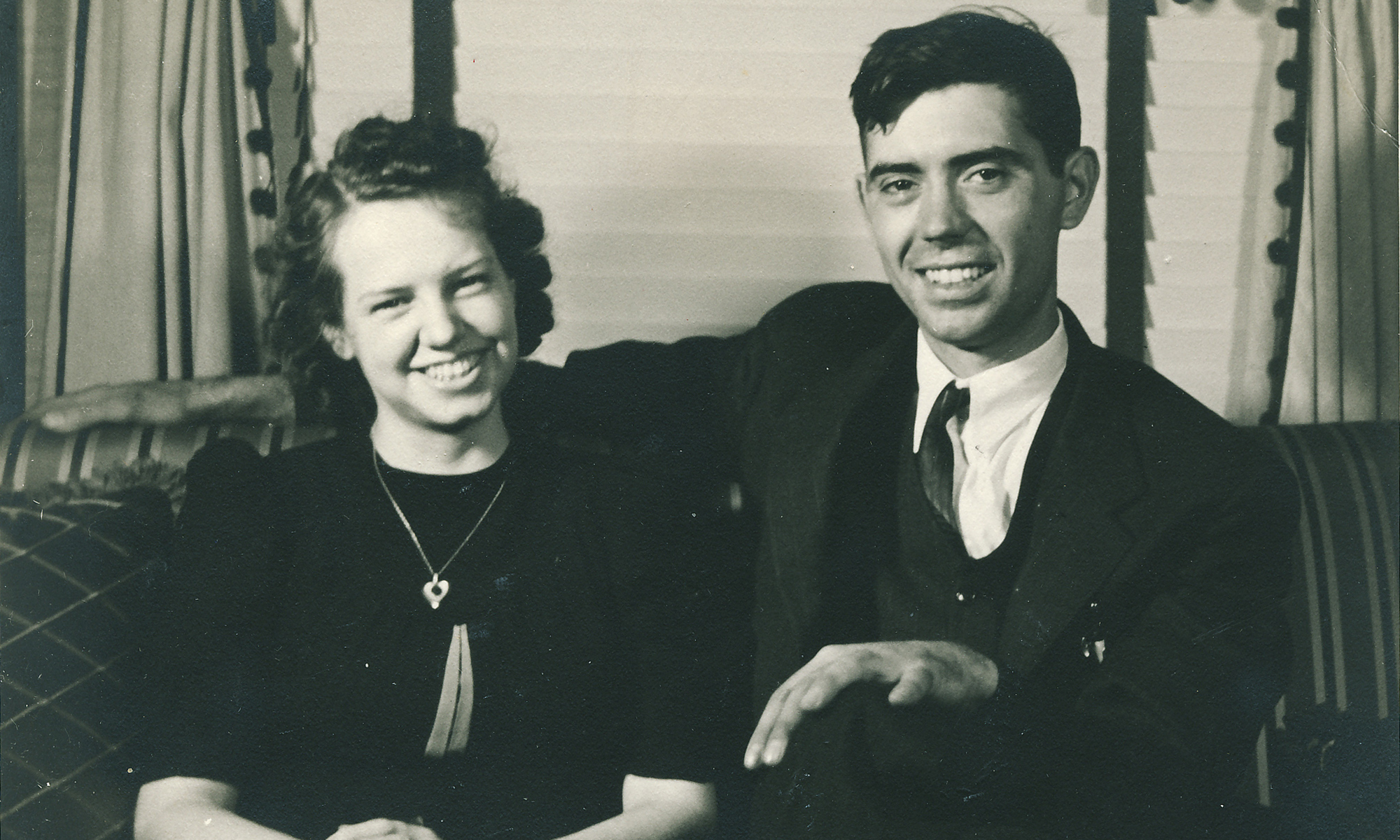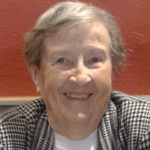 This post is dedicated to JoAnn Schrotzberger (1927-2021) [link is to her obituary], an avid genealogist and passionate historian of all things related to the Schrotzberger family.
This post is dedicated to JoAnn Schrotzberger (1927-2021) [link is to her obituary], an avid genealogist and passionate historian of all things related to the Schrotzberger family.
She was a cousin, a friend, a mentor, and a collaborator who will be sorely missed.
Our paternal grandfather, Herman Schutze (1891-1968) used to quip about the tangled relationships between the Schutze and Schrotzberger families.
His birth mother Friederike (née Schrotzberger) died when he was an infant, and his father then married Friederike’s widowed sister Hannah. That resulted in Herman having an aunt who was his step-mother and a cousin who was his step-sister. And years later when Herman’s sister-in-law married Ted Schrotzberger, Herman’s uncle became his wife’s brother-in-law.
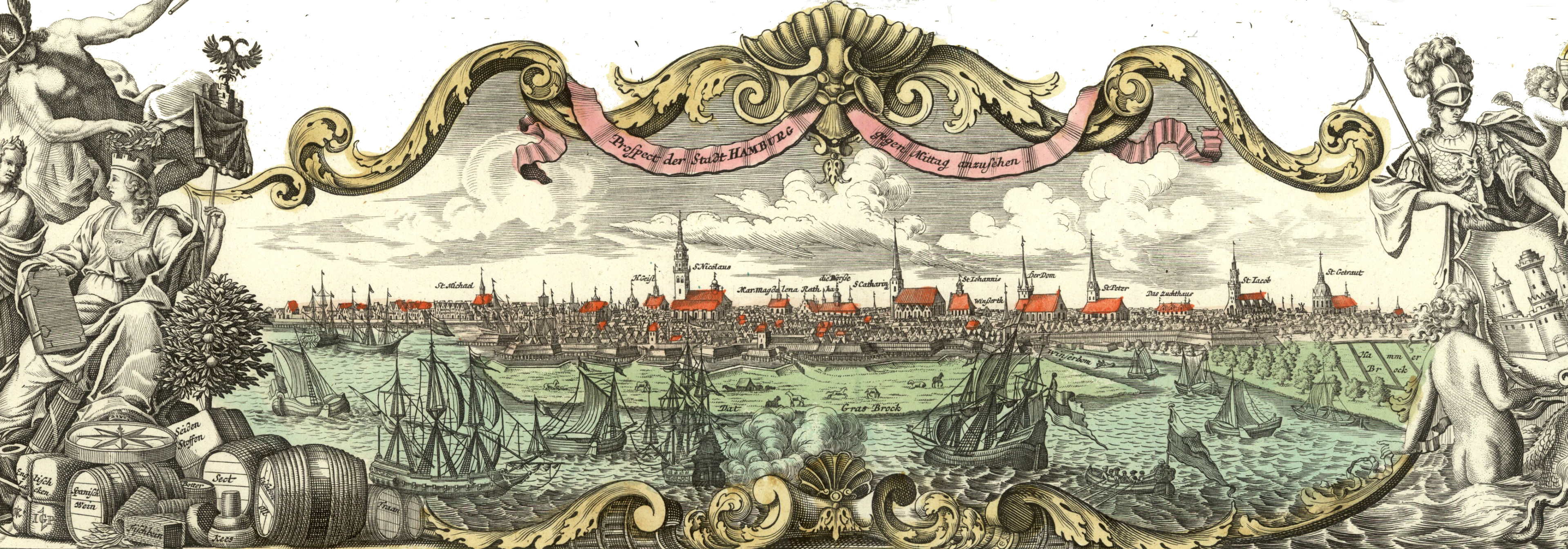
The Schrotzberger family would have attended a number of them as they moved around the city. Click on map for larger image.
The close relationship between the families began in Hamburg, Germany, where our great-grandfather, Hermann Schütze (1851-1909), a journeyman butcher, came across Johann Schrotzberger (1823-1902), a master butcher and business owner in Hamburg’s slaughterhouse district. It’s likely Hermann worked for the older Johann, and through that connection began an association with his family. Hermann ended up moving in with them and marrying Johann’s eldest daughter Friederike in 1879. Their children and their progeny, therefore, owe half of their German genes to the Schrotzberger bloodline.
We’ll take a look at the history of the Schrotzberger family in Germany, to see where the family roots began and where they spread.
Johann Leonhard Schrotzberger (1823-1902)
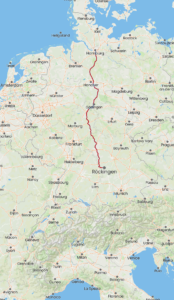
Click to enlarge.
Johann Schrotzberger, the master butcher, moved from his birth village of Röckingen, in Bavaria, four hundred miles north to one of Europe’s largest ports —the city-state of Hamburg, Germany, in 1845, at the age of 22.1 He left a village of about 800 people to join a city of over 140,000 residents (that more than doubled by the time he emigrated to the U.S.). It’s likely he went to Hamburg to complete the requirement of becoming a journeyman (literally “journey man”) butcher, but the prospect of adventure and opportunity in a major port town likely contributed to his move to that particular city.
Johann was the oldest of his parents’ eleven children. His father was an (at the time) unmarried farmer (Bauer). His mother was the granddaughter of a butcher and one-time mayor of the village of Röckingen.2 His mother’s father and brother were also butchers, likely inspiring Johann’s career choice.

The first line reads “Johann Leonhard, illegitimate son of Sophia Catharina Rau.” The right-hand column identifies his father as Joh[hann] Mich[ael] Schrotzberger.
Sophia Elisabeth Stallbaum’s history is harder to trace, as the parish records of her home town of Lüneburg, 35 miles southeast of Hamburg, are not yet digitized. From research that JoAnn Schrotzberger did, we know Sophia’s father was Heinrich Georg Stallbaum and her mother was Anna Catherina Bleÿ. Her parents were married in April of 1816 in Lüneburg while her father was serving as a soldier. Sophia was born in 1827, the seventh of nine children. She came to Hamburg in 1843, nine years after her father’s passing, and two years before Johann Schrotzberger arrived at the city.
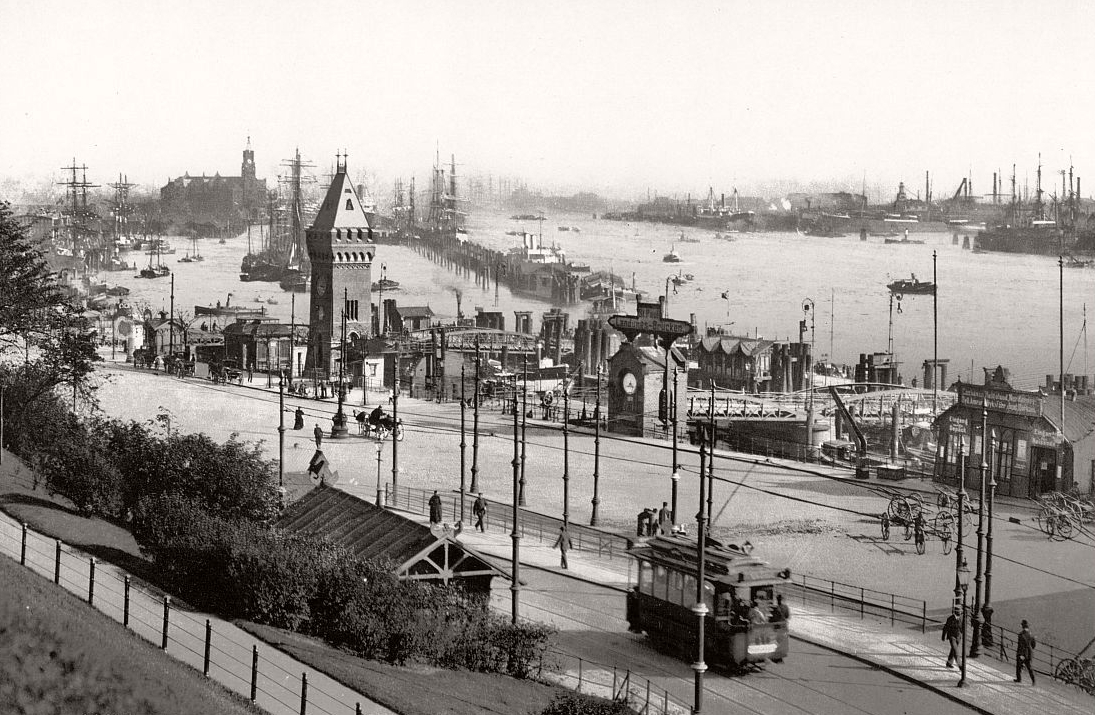
During his years in Hamburg Johann had at least seven residences, moving his wife and growing number of children from the old town, to the new town, to the harbor, and eventually to the St. Pauli district.3 Hamburg was a port city that catered to sailors and the seafaring community, and the St. Pauli district — in 1840 — had 250 different occupations deriving income from port activity, and housed 100 captains, 100 innkeepers, and 150 registered prostitutes in 20 brothels.4 One can imagine that all that activity required a lot of energy — and meat — and Johann worked at providing the latter.
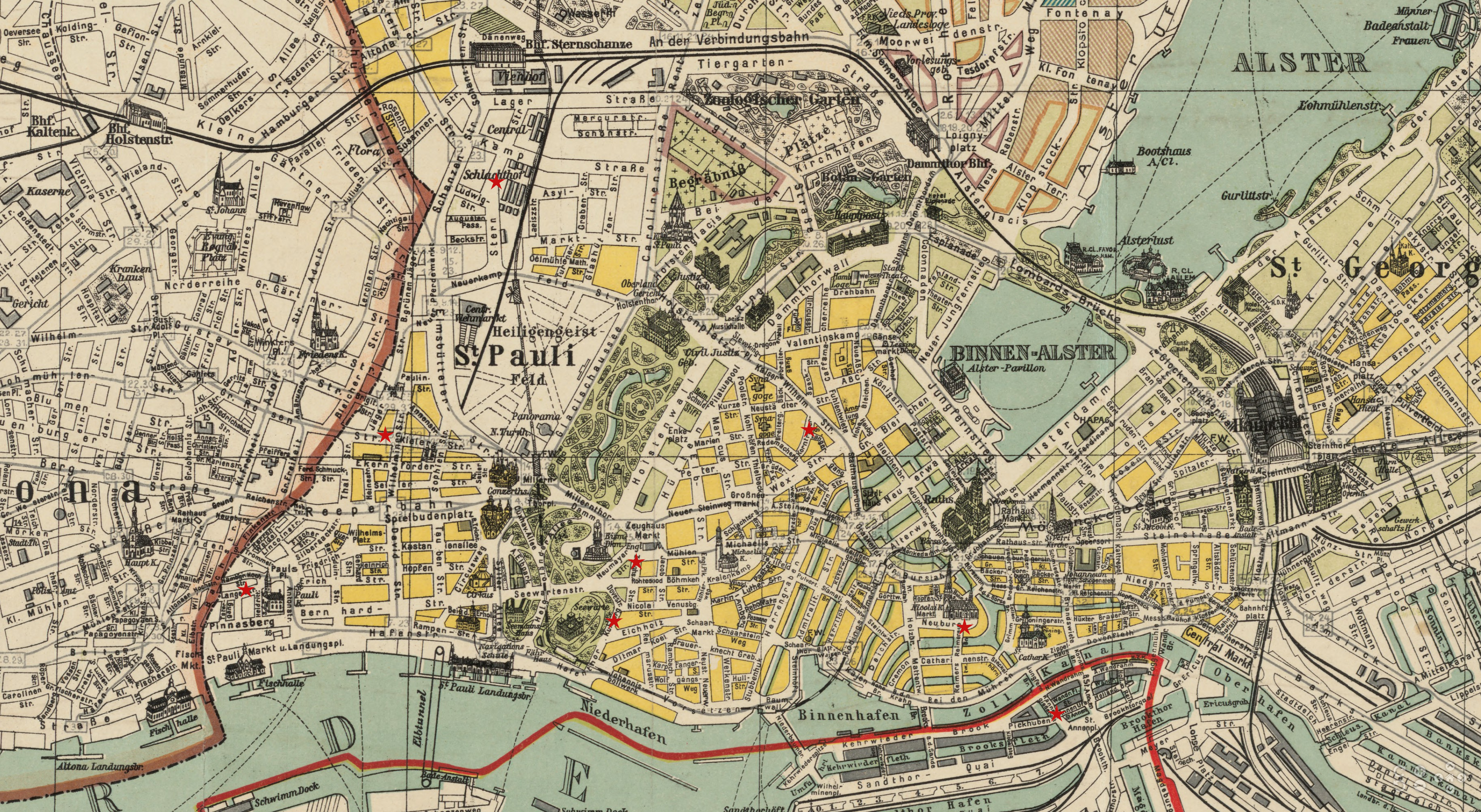
By all appearances Johann Schrotzberger was an enterprising man, rising up the economic ladder through a succession of jobs and businesses. When he married in 1853 he was a sausage and smoked meats dealer, then became a hide trader, a sausage maker, an intestine dealer, a butcher, a master butcher (he obtained that status in 18605), and a business owner — of the J. L. Schrotzberger company.6 Around 1870 Johann took over the quarters of another butcher on Sternstraße (Star Street) in the noisy and malodorous central slaughterhouse district, moving his wife and at that time eight children to their final home in Hamburg. See the map above.
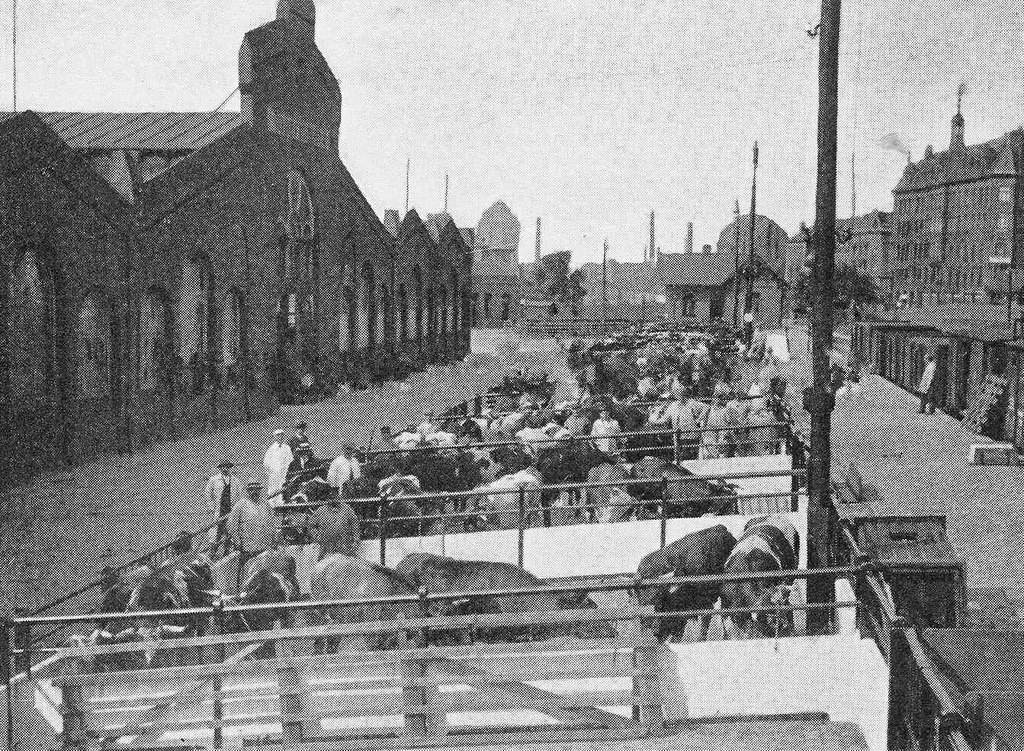
By 1877 Johann bought most of the flats in his and the adjacent block’s building and rented them out, adding the title of landlord to his portfolio.7 A photograph of his children from the mid 1870s shows a family that is well dressed and by all appearances prosperous.

As his daughters became marrying age, suitors began to arrive. On the same day —July 4th, 1879 — two of his daughters married men who joined the Schrotzberger household at Sternstraße 70. One of the suitors was the fore-mentioned butcher Hermann Schütze and the other was a ship’s helmsman, Hugo Kopff. The sisters were Friederike and Hanna. (In a twist of fate, Hermann later married Hanna after their first spouses died, leading to that Schutze-Schrotzberger entanglement mentioned earlier.)
The happiness of nuptials, however, was soon tempered by loss. The newlywed son-in-law Hugo Kopff died six months into his marriage, in December 1879, leaving a grieving and pregnant widow. The other son-in-law, Hermann Schütze, emigrated to the United States in May of 1880, with his wife following three months later. And most devastatingly, Johann lost his wife Sophia, who passed away at age 53 in September of 1880.
Johann, now a widower and father of multiple children, was at a crossroads. Never one to shy away from a challenge or opportunity, he decided to join his eldest daughter and son-in-law in Detroit, Michigan. He emigrated, with his remaining eight children and two grandchildren, in August 1881 at the age of 58. On the inner east side of Detroit, in Germantown, he opened a butcher shop on Gratiot Avenue with his sons, replicating his success in Hamburg.
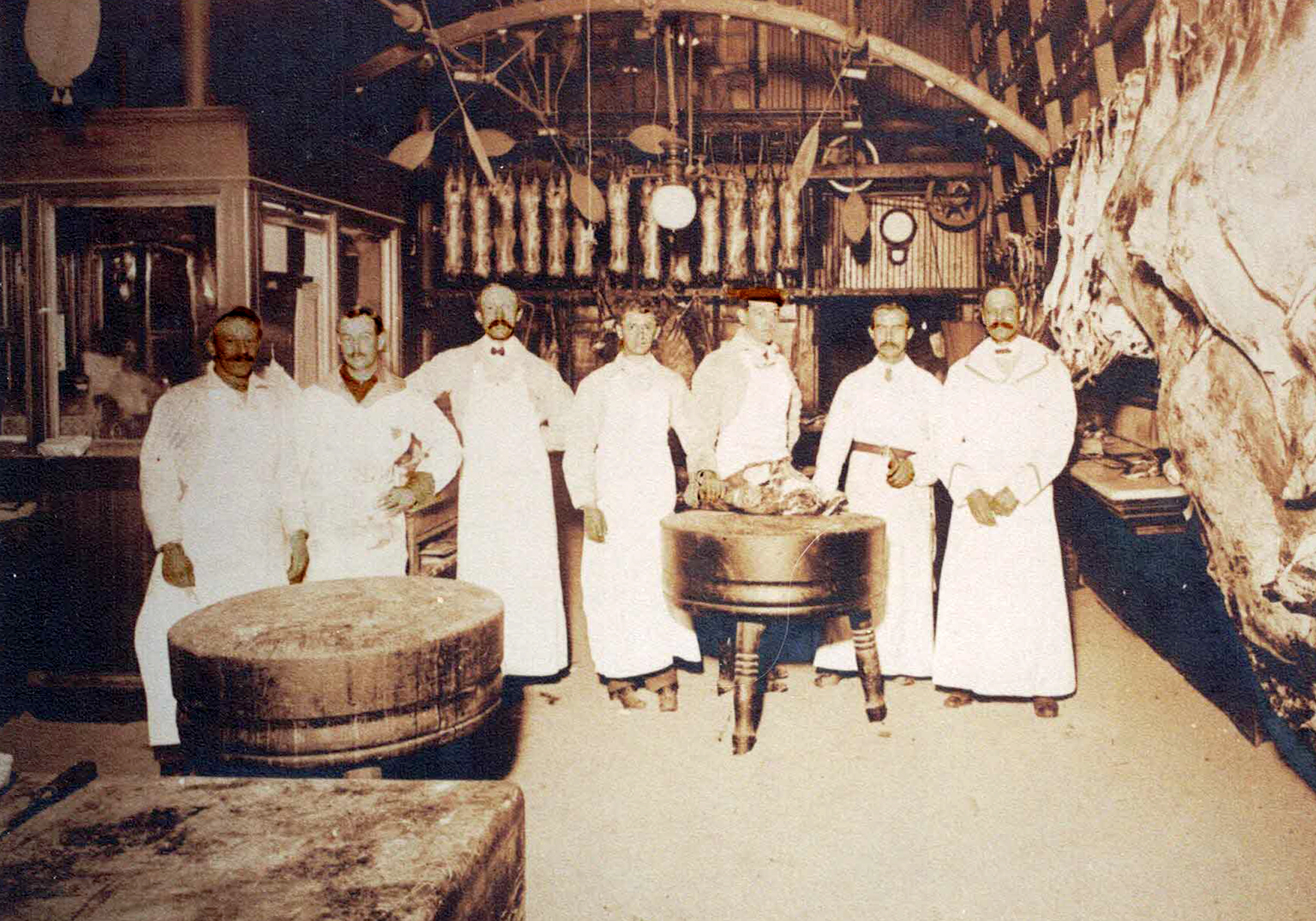

An ad in the Evening News on October 18, 1890.
According to his great-granddaughter JoAnn Schrotzberger, Johann had a falling out with some of his family in the early 1890s. He bought a 360-acre farm north of Detroit where two of his sons joined him. Six years later he returned to the city, for a while living with his daughter Hanna and son-in-law Hermann Schütze — completing the circle that began in Hamburg. When Hermann and Hanna moved to Canada in 1901, Johann went to live with his sons Frederick and Julius, at whose home he succumbed to nephritis at the age of 79 in 1902. His body was buried in an area of Trinity Cemetery, on Mount Elliot in Detroit, holding a number of his family members, including his daughter, a son, and two granddaughters. (If you want to visit them at Section O, Lot # 12, be forewarned that many Schrotzbergers don’t erect headstones, including the family buried here.)

The earlier Schrotzberger Families of Röckingen
The Schrotzberger clan can be traced back to the mid 1700s,8 with the marriage of Johann Leonhardt Schrotzberger (1720-1762), son of Tobias Schrotzberger, to Anna Barbara Eissens in 1751 at St. Laurentius Church in Röckingen. (Click here to see the entry in the church register … and let me know if you have any better luck interpreting it! )
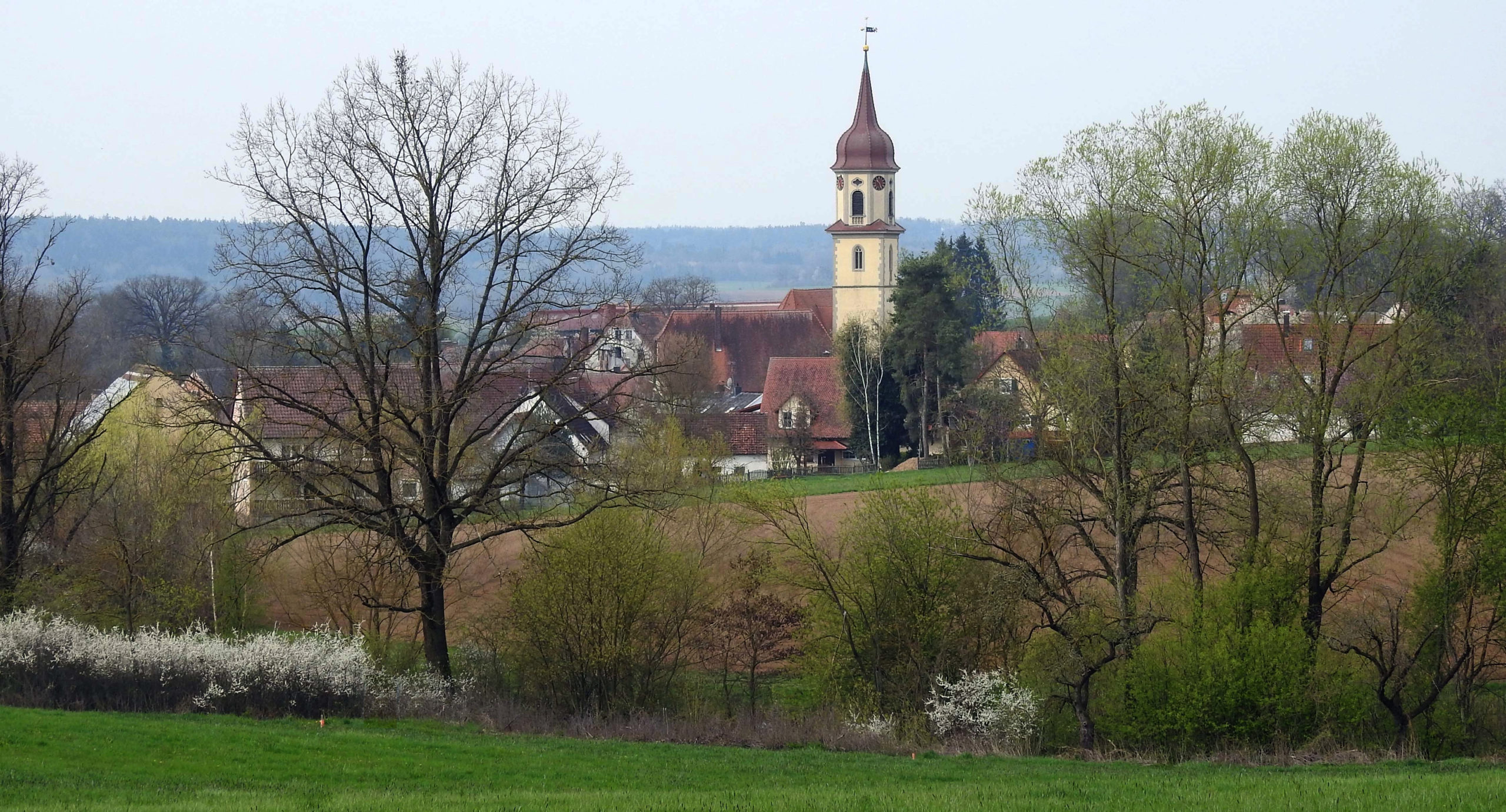
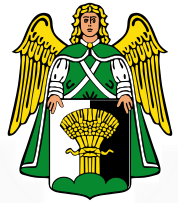
Röckingen is a village about 100 miles northwest of Munich — roughly in the middle of a triangle formed by the cities of Stuttgart, Nuremberg, and Munich — nestled between the Wörnitz River9 on the south and the Hesselberg mountains on the north. Johann Leonhard was a barley farmer (Gerstenbauer), an occupation typical for the area, and he and Anna Barbara had four children between 1752 and 1761, before Johann’s untimely death at the age of 41 in 1762.
Their third child, named after his father, was born in 1759. He was fatherless before the age of three. This Johann Leonhard Schrotzberger (1759-1837) married Maria Margaretha Wunschenmeier (you’ve gotta love these Germanic names) and they had four children between 1795 and 1803. Johann made his living as a small farmer (variously reported as a Söldner10 and Halbbauer), owning probably less than 10 acres.11
“In Bavaria … most farm houses were and still are located inside the village. Attached to the house is the barn. The space in front of the house and barn is called the Hof (courtyard). Cows, pigs, and other farm animals live inside the barn. Outside the village, land was divided up into fields where farmers grew crops.”12
He went on to also become a master baker (Bäckermeister) in his middle and later years. He died at the respectable age of 77 in 1837, Maria died in 1844 at the same age.
Their first child, Johann Michael Schrotzberger (1795-1861), was a small farmer like his father. He, however, put his cart before his horse, so to speak, fathering four children before marrying their mother. Their fourth child, named for his father, died when only twelve days old, and the couple married seven weeks later in 1828 . . . whether they suddenly found religion through tragedy is unknown. The couple went on to have seven more children, for a total of eleven between 1823 and 1840.
Johann Michael Schrotzberger’s wife was Sophia Katharina Rau, whose family apparently played a large role in their children’s lives. Sophia Katharina’s grandfather, Johann Georg Josea Rau, as previously mentioned, was the first recorded mayor of Röckingen, from 1788 to 1790, as well as a master butcher (Metzgermeister). Sophia’s father and brother were also butchers. This is likely the reason that three of Johann and Sophia’s four surviving sons became butchers, including our Johann Leonhard Schrotzberger as reported at the top of this post.

The other son, and the first of their legitimate children, Johann Georg Schrotzberger (1829-1894), carried on the farming tradition of his Schrotzberger ancestors, inheriting the farm and house in Röckingen13 which still stands. JoAnn Schrotzberger sent me a captioned photograph of it. When I travel to Germany this summer I’ll look up the house that sheltered our ancestral families and their farm animals . . . the house where Johann Leonhard, our great-great grandfather, played in the courtyard as a child, helped feed (and perhaps butcher) the animals, and got his start in life before moving to Hamburg, and years later to Detroit.
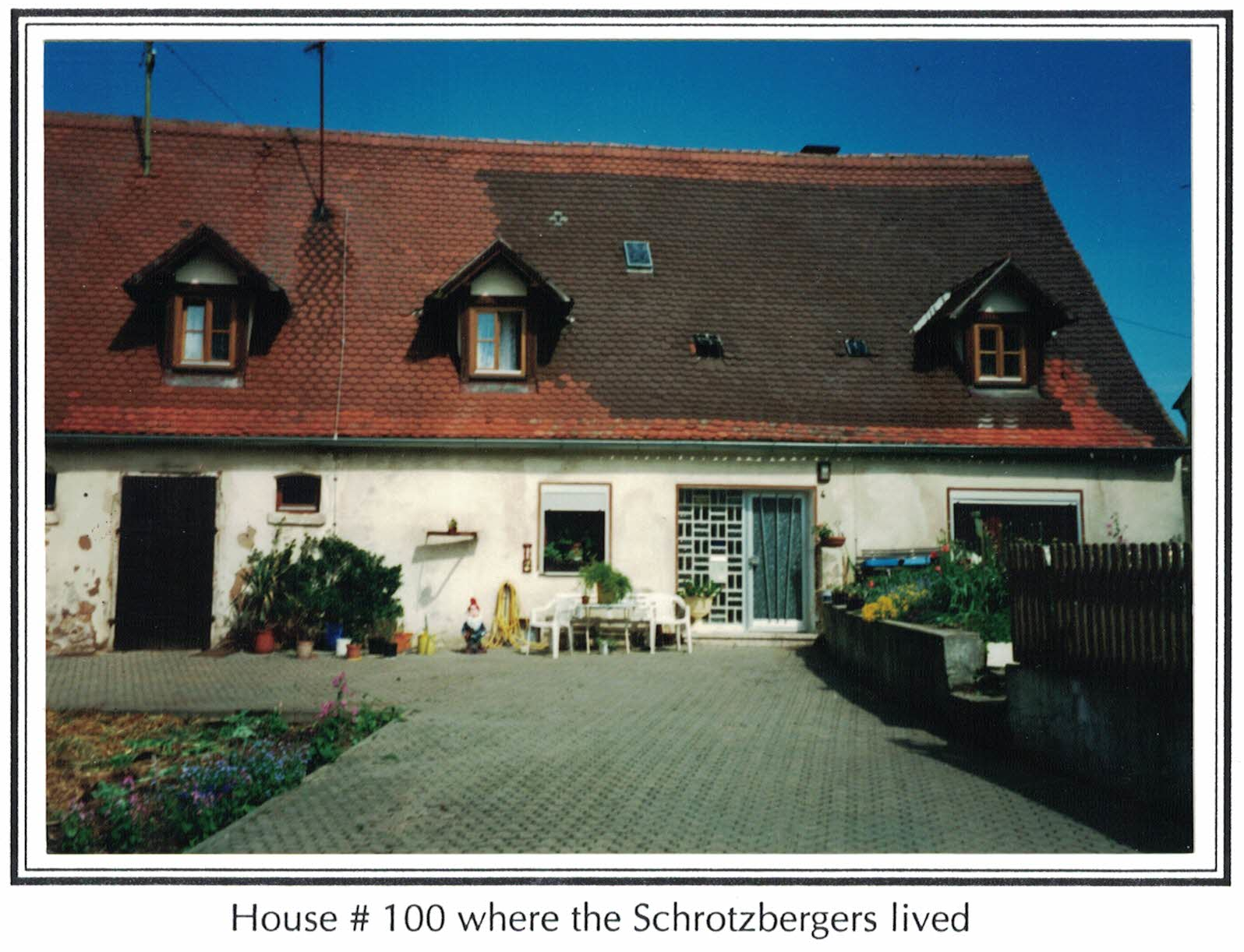
The Röckingen Schrotzberger Descendants
The Schrotzberger legacy didn’t end in Röckingen after our great-grandfather Johann Leonhard (J. L.) left to pursue his career in Hamburg. Per “The History of Röckingen and Its Environs:“
• Friedrich Schrotzberger, likely the brother of J. L., was a decorated soldier of the 14th Bavarian Infantry Regiment which fought against Prussia in 1866.
• In the Second World War another Friedrich Schrotzberger soldier went missing in action.
• Georg Karl Schrotzberger (1896-1977), a grand-nephew of J. L.’s, was the mayor of Röckingen from 1933 until 1940. In 1940 he was drafted into the army and served on the front lines in Russia, Greece, and Yugoslavia as a staff sergeant.
It should also be noted that on the other side of the ocean, Earl A. Schrotzberger, a great-grandson of J. L., signed up for service with the American forces in the Second World War and served as a turret gunner in a B-24 Liberator heavy bomber. He was captured in July 1944 during a mission over Ploesti, Romania, but was freed in 1945.14 In effect, World War II temporarily clove the family in two.
Notes:
1. The years of Johann Leonhard Schrotzberger’s and Sophia Elisabeth Stallbaum’s moves to Hamburg are found on their marriage register: Verheiratungs-Protokoll, 1816-1865; Authors: Hamburg (Hamburg). Bürgermeisterei Wedde II; Salt Lake City, Utah : Gefilmt durch The Genealogical Society of Utah, 1968. Family History Library film #558609, record 305 / DGS #8207690, image 205 of 260.
2. Karl Schrotzberger, The History of Röckingen and Its Environs (Die Geschichte Röckingens und seiner Umgebung), (Röckingen: Karl Schrotzberger, 1975). The booklet was sent to me by JoAnn Schrotzberger in November, 2013.
3. Addresses and occupations of Johann Leonhard Schrotzberger were tracked from 1854 through 1881 through Hamburg address books archived at Staats- und Universitätsbibliothek Hamburg, “Hamburg Address Books,” https://agora.sub.uni-hamburg.de/subhh-adress/digbib/start-en.
4. St. Pauli Kirche, “Geschichte” (History), https://www.stpaulikirche.de/geschichte/
5. Staatsarchiv Hamburg, “Beitritt des Darmhärmhandlers J.L. Schrotzberger zur Schlachtergesellenlade, 1860 (Bestelleinheit),” http://recherche.staatsarchiv.hamburg.de/detail.aspx?ID=956759
6. “Hamburg Address Books.”
7. Ibid.
8. Sources of information on the Schrotzberger family in Röckingen are parish records obtained at Archion.de, “Bavaria: Regional Church Archives of the Evangelical Luth. Church > Deanery Wassertrüdingen > Röckingen” unless otherwise indicated.
9. A tributary of the Danube River
10. “In some areas of Germany, Söldner can mean ‘soldier’ or ‘mercenary’ (Latin: soldarius), but in Bavaria a Söldner was a Kleinbauer (small farmer).” See Söldner link for more on the definition.
11. The likely farm size is based on 10 Tagewerk, converted to acres at this Tagwerk link.
12. Auswander, “Types of farms, house owners, residents, occupations in Bavaria, Germany,” https://sites.google.com/site/auswanderer20/types-of-farms-in-germany
13. The house number, Nr. 100, is identified on his death register dated 3 March 1894. The register also identified his section of the fields outside the town as Nr. 199. I’ve written the current mayor of Röckingen for assistance in finding the house in town and the field outside of town so we can visit them this summer.
14. The Detroit News, “16 From City Area Killed, 4 Wounded,” November 19, 1944, page 75; and The Detroit News, “7 More From Area Give Lives in War,” July 2, 1945, page 13.
